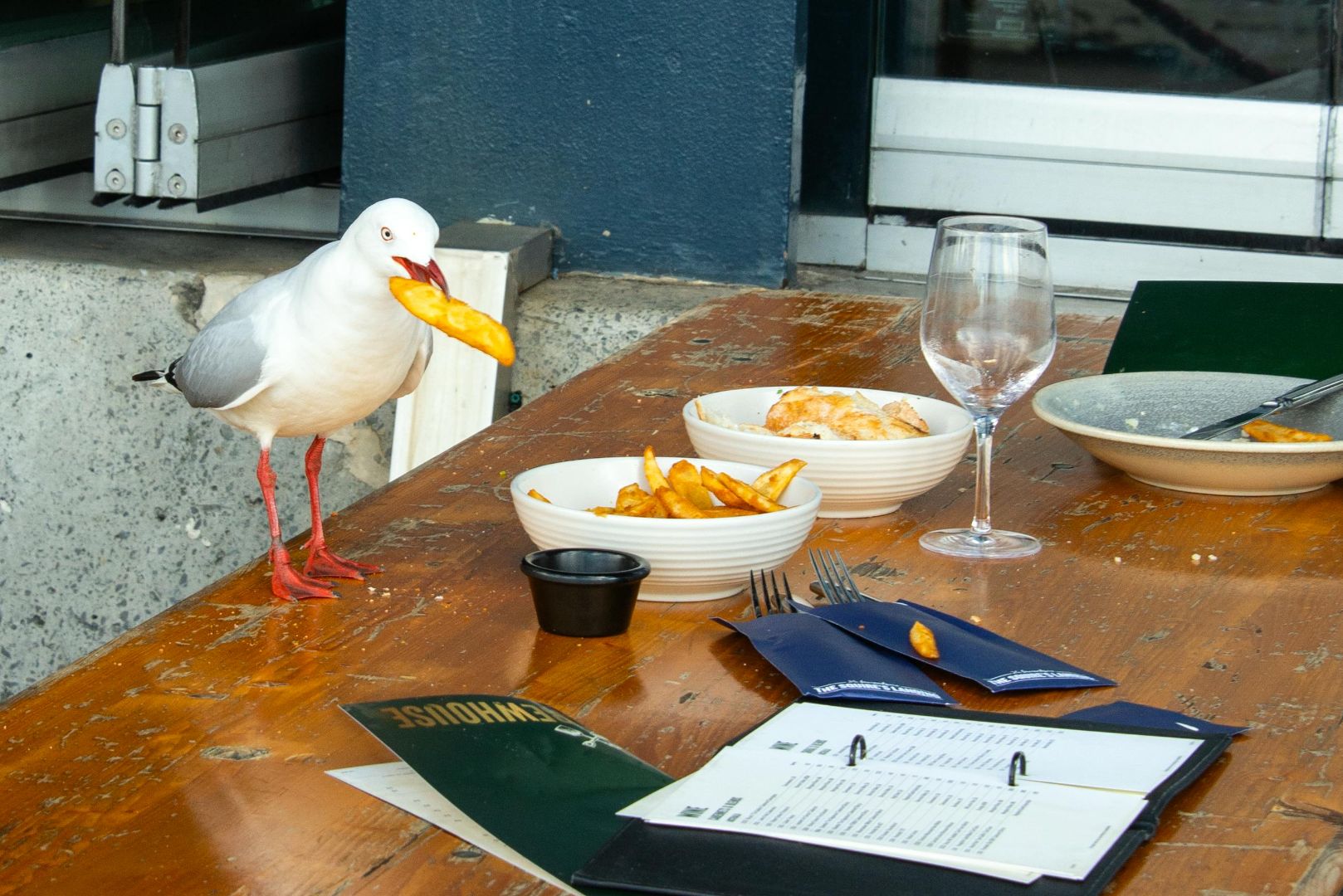When someone’s hungry, the first place they go is Google—not your storefront. Today, over 90% of diners search for a restaurant online before visiting or ordering. So if your restaurant isn’t showing up on page 1, you’re losing traffic—and revenue—to competitors who are.
That’s where SEO (Search Engine Optimization) comes in. It helps you get discovered, build trust, and bring more people through the door (or into your ordering funnel). Let’s dive into how SEO can work for your restaurant—and exactly how to do it.

Why Is SEO Important for Restaurants?
- 46% of all Google searches are for local information.
- 76% of people who search for something nearby visit a business within a day.
- 61% of mobile searchers are more likely to contact a local business with a mobile-friendly site.
SEO isn’t just a digital add-on—it’s a necessity for driving footfall, online orders, and phone reservations.
📈 What Can SEO Do for Your Restaurant?
| SEO Benefit | What It Means for You |
|---|---|
| Higher Local Visibility | Appear when someone searches “Thai food near me” |
| More Website Traffic | Boost visits to menus, reservation pages, and contact info |
| Stronger Brand Trust | Show up with great reviews, updated info, and professional presence |
| Increased Conversions | More calls, bookings, and deliveries from organic search |
| Better Customer Experience | Clear navigation, fast load times, useful info = happy users |
How to Do SEO for a Restaurant: A Step-by-Step Guide
1. Do Keyword Research
You need to know what people are searching for. Use tools like:
- Google Keyword Planner – for free keyword discovery
- Ubersuggest – simple suggestions and volume data
- SEMrush or Ahrefs – detailed keyword + competitor analysis
Target keyword types like:
- “best pizza place in [your city]”
- “rooftop restaurants in [your neighborhood]”
- “vegan brunch near me”
- “[cuisine] takeout [your city]”
Pro Tip: Use long-tail keywords—they’re easier to rank for and bring more qualified traffic (e.g., “gluten-free Italian lunch in Austin”).
2. Optimize Your Website for SEO
Your website is your digital storefront. Here’s how to make it SEO-friendly:
Basic On-Page SEO:
- Use your keywords naturally in titles, headers (H1, H2), and page content
- Add meta titles and meta descriptions for each page (Google uses these in search results)
- Use alt tags on images to help Google “see” your photos
Mobile Optimization:
- Make sure your site is responsive (auto-adjusts to screen size)
- Keep text large and buttons tappable
- Avoid slow-loading animations
- Compress images for speed
Why it matters: Over 60% of local food searches happen on mobile!
Site Speed:
Use PageSpeed Insights to test your site. Faster sites = better SEO & UX.
3. Set Up and Optimize Your Google Business Profile
One of the most powerful local SEO tools.
Must-haves:
- Correct business name, address, phone (NAP)
- Business hours, links to reservations or ordering
- High-quality photos of food, ambience, and staff
- Respond to every review, especially negative ones, professionally
- Use Google Posts to announce events or deals
Stat: Google Business Profile alone can boost a business’s discoverability by 70%.
4. Add Localized Content to Your Site
Google loves content that speaks to a specific place or audience.
Write location-specific blog posts:
- “Best spots for breakfast in [Area]”
- “What to eat during Diwali in [City]”
- “Top family-friendly dinner spots in [Neighborhood]”
Add local landmarks, seasonal references, or area-specific dishes.
Use localized language:
If your region has a strong second language (e.g., Spanish in California), consider adding bilingual content or keywords in local dialect/slang.

5. Tools to Use for SEO
| Tool | Use Case |
|---|---|
| Google Analytics | Track traffic, bounce rate, conversions |
| Google Search Console | Monitor indexing and keyword ranking |
| PageSpeed Insights | Optimize site speed |
| Yoast SEO (for WordPress) | On-page optimization, readability |
| Moz Local | Manage and sync NAP across directories |
| SEMrush / Ahrefs | Advanced keyword + backlink tracking |
6. Use Stunning, Relevant Photos
Search engines love well-optimized images—and so do hungry humans.
Tips:
- Use original high-res images of your dishes, interiors, and staff
- Rename files descriptively (e.g., grilled-salmon-downtown-nyc.jpg)
- Add alt text that includes keywords and dish names
Bonus: These images also appear in Google image searches and help with map listings.
7. Make Your Website User-Friendly
Good SEO isn’t just about search engines—it’s about humans finding what they need quickly.
Must-have features:
- Easy-to-navigate menus (food + site)
- Click-to-call phone number on mobile
- Online reservation system or integration (e.g., OpenTable)
- Updated hours, parking info, and COVID precautions
- Embedded Google Map
- Clear “About Us,” “Contact,” “Menu,” and “Blog” pages
8. Earn Backlinks from Relevant Sources
Google loves it when other trusted websites link to yours.
Get links from:
- Food bloggers & influencers in your area
- Local event listings or press
- Sponsorships with schools, festivals, and sports teams
- Restaurant directories (Zomato, Yelp, TripAdvisor)
Use tools like Ahrefs to track backlinks and find opportunities.
9. Use QR Codes to Connect Offline to Online
Place QR codes on:
- Menus, takeout packaging, table tents
- Receipts, flyers, event signage
Link them to:
- A game or quiz (gamified engagement)
- A reservation or feedback form
- A blog post or seasonal special
This improves engagement, drives repeat visits, and improves SEO with increased site activity.
Example: Blog Structure for a Restaurant with Multiple Locations
Let’s say you run a chain of 3 Thai restaurants in Austin. Instead of one generic website, create:
Each page includes address, map, hours, reviews, and tailored blog posts like “Top Thai Lunch Spots in North Austin” and “Where to Eat Pad Thai in South Austin.” This structure boosts local SEO, lets you rank for area-specific keywords, and serves highly relevant content to each audience.
How to Measure SEO Success
Use tools like Google Analytics & Search Console to track:
- Organic traffic growth
- Keyword rankings
- Time on page and bounce rate
- Clicks on “Order Now”, “Call”, or “Directions”
- Leads captured via forms or newsletter sign-ups
Final Thoughts
SEO is not just about ranking—it’s about connecting with real people looking for a great place to eat, celebrate, or relax. Whether you’re a solo food truck or a multi-location restaurant, a strong SEO strategy can help you:
- Show up where it matters
- Bring new customers in the door
- Build lasting loyalty
It’s an investment in discoverability, trust, and growth—and your restaurant can’t afford to ignore it.
FAQs
Q: How long does it take to see results from SEO?
A: SEO is a long-term strategy. Typically, noticeable improvements can be seen within 3 to 6 months, depending on the competitiveness of your market and the effectiveness of your SEO efforts.
Q: Can I do SEO myself, or should I hire a professional?
A: While basic SEO can be managed in-house, hiring a professional or agency can provide advanced strategies and save time, especially in competitive markets.
Q: How often should I update my website content?
A: Regular updates, such as monthly blog posts or seasonal menu changes, keep your website fresh and signal to search engines that your site is active.
Q: Is it necessary to have a blog on my restaurant’s website?
A: Yes, a blog can enhance SEO by targeting specific keywords, sharing updates, and engaging with your audience, thereby driving more traffic to your site.
Contact Us
For more tips on how to optimize your restaurant’s SEO, visit Quickbuzz for expert insights and tools to enhance your blogging efforts.